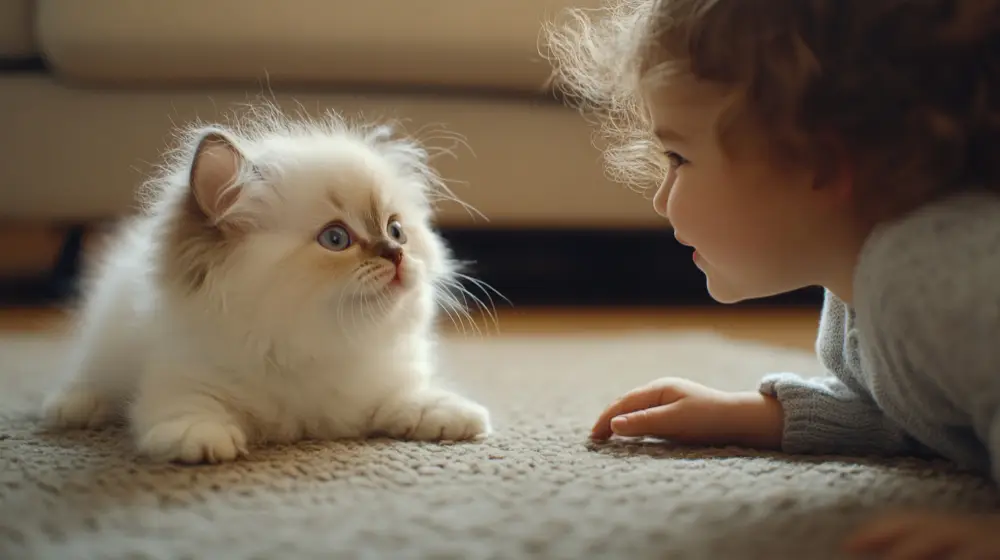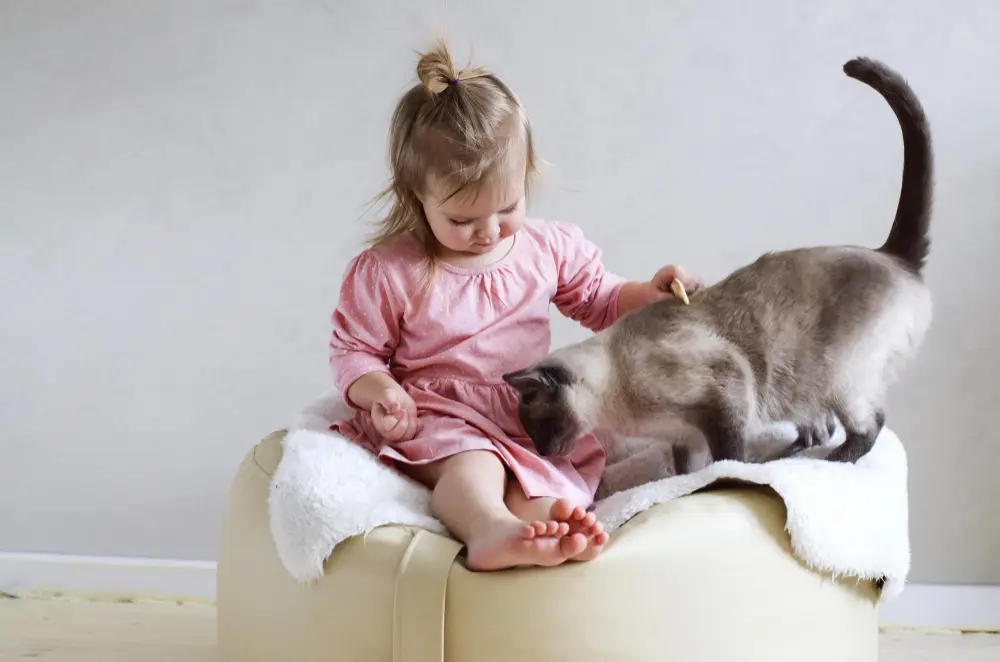Few things feel as heartwarming as a Ragdoll Cat Lounging on a Child’s Lap. With their soft nature and love for cuddling, Ragdolls have become one of the most family-friendly breeds. They’re affectionate, gentle, and wonderfully patient qualities that make them a perfect match for households with children.
What Makes Ragdolls Different from Other Cats?
Unlike many cats who value independence, the Ragdoll thrives on closeness. They love human contact and prefer staying close rather than retreating to quiet corners. True to their name, they often go limp when held, which makes them feel like a soft toy in your arms.
Ragdolls also seek out laps naturally and may spend long stretches of time curled up with their favourite person. This unique personality is why they are often called the ultimate family cat.
Why Ragdolls Are Ideal for Children
Children can be energetic and curious, which means not every cat breed is a good match. Ragdolls, however, have qualities that make them especially suited to young families. They are known for their gentle temperament, rarely using claws or teeth during play. Their patient and tolerant nature allows them to remain calm even with sudden movements or loud noises.
Because they love being lap cats, kids who enjoy quiet moments reading or watching TV will find comfort in a Ragdoll nestled on their lap. Some even describe them as dog-like, following children around the house and forming strong emotional bonds with the ragdoll.
The Emotional Benefits of Ragdolls for Children
A Ragdoll cat sitting on a child’s lap does more than create a cute picture, it can have real emotional benefits. Running fingers through a Ragdoll’s silky coat can ease a child’s anxiety and bring comfort.
Caring for such a gentle pet also teaches children compassion, empathy, and responsibility. The soft sound of a purring cat creates a sense of security, while a Ragdoll’s love of calm moments encourages quiet bonding after school or before bedtime.

Teaching Children to Handle Ragdolls Safely
Although Ragdolls are known for their tolerance, children should still learn gentle handling. This keeps both the cat and the child safe and comfortable.
Always support the cat’s body when lifting, and remind children never to pull on tails, ears, or whiskers. Encourage gentle strokes instead of tight squeezes, and help them notice when the cat needs space.
Families who follow these simple rules often find their Ragdoll cat becomes a best companion to children, not just a pet.
Care Tips for Families with Ragdolls
General Care & Environment
Keep your Ragdoll indoors because they are gentle, trusting, and less street-smart. Create cosy spaces with beds, blankets, or cushions where they can relax. Stick to a routine for feeding, playtime, and grooming so they always feel secure.
Nutrition
Feed your Ragdoll high-quality cat food with the right balance of protein, fats, and nutrients. Measure portions carefully since they can gain weight easily. Offer fresh water daily and consider using a fountain to encourage drinking.
Grooming
Brush your Ragdoll two to three times a week to keep their semi-long coat smooth and reduce hairballs. Bathe them occasionally if their fur feels greasy. Trim their nails regularly and check their ears for wax or irritation.
Play & Enrichment
Play with your Ragdoll using wand toys, feather teasers, or balls. Give them a cat tree or shelves for climbing and lounging. Challenge their minds with puzzle feeders or treat-dispensing toys.
Family Interaction
Spend time cuddling and bonding with your Ragdoll because they love attention. Teach children how to handle them gently by supporting their full body. Invite your Ragdoll onto your lap—they enjoy closeness and affection.
Health Care
Take your Ragdoll to the vet every year, or more often if they are older. Keep their vaccinations and parasite treatments up to date. Watch for signs of health issues such as difficulty breathing or changes in urination, since Ragdolls can be prone to heart and urinary conditions.
Quick Tip: Ragdolls thrive in busy households as long as you give them affection, play, and calm interaction. They are loving and adorable friends for the whole family.
Conclusion
When a Ragdoll Cat Lounging on a Child’s Lap, it’s more than a sweet picture it shows the very soul of the breed. Known for their calm, affectionate, and trusting nature, Ragdolls are among the best lap cats for families. With gentle care and handling, they become devoted companions, teaching children the value of love, patience, and the simple joy of quiet company.







